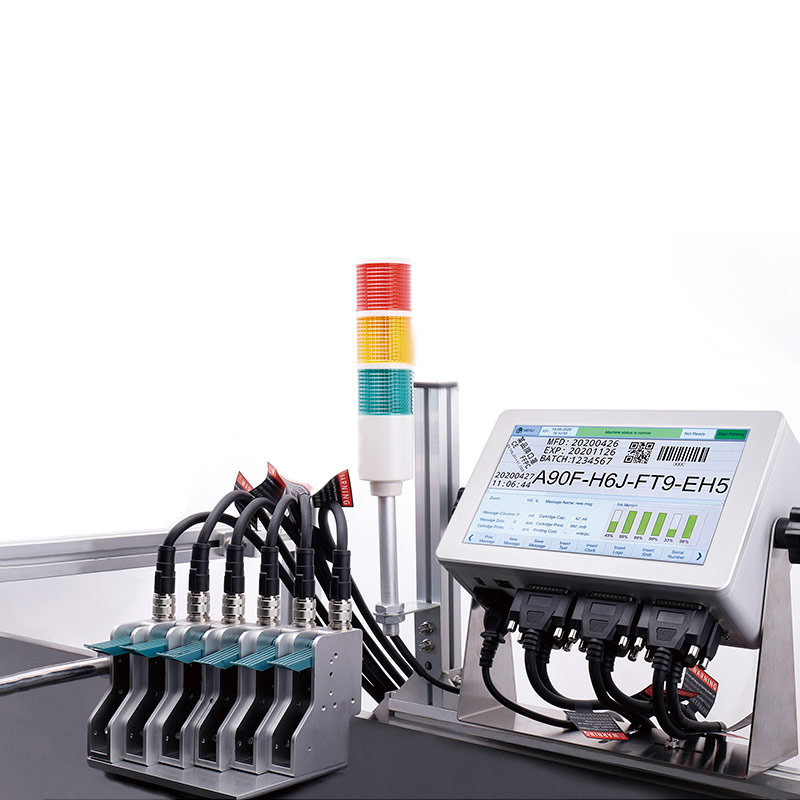As an Inkjet Label Printer Manufacturer, share with you.
Thermal inkjet technology is to let the ink pass through a thin nozzle, under the action of a strong electric field, a part of the ink in the nozzle pipe is vaporized to form a bubble, and the ink at the nozzle is ejected to the surface of the output medium to form a pattern or character. So this kind of inkjet printer is sometimes called a bubble printer. The nozzle made with this technology is relatively mature and low in cost, but since the electrodes in the nozzle are always affected by electrolysis and corrosion, it will have a lot of impact on the service life. Therefore, the print head using this technology is usually built with the ink cartridge, and the print head is updated at the same time when the ink cartridge is replaced. In this way, users do not have to worry too much about the problem of nozzle clogging. At the same time, in order to reduce the cost of use, we often see the situation of injection (filling ink) into the ink cartridge. Just after the print head finishes the ink, fill the special ink immediately, as long as the method is correct, you can save a lot of consumable costs.
Thermal Inkjet Printer
Placement:
Choosing a better location can avoid many unnecessary troubles.
A. Place the printer on a level and stable surface.
B. Place the printer in a place where it is easy to connect to a computer or network interface cable, and where it can be cut off easily.
C. Leave enough space for operation and maintenance; leave a large enough space in front of the printer to facilitate paper output.
D. Avoid using and placing the printer in places where the temperature and humidity change suddenly. The printer should be kept away from direct sunlight, strong light sources and heating devices.
E. Avoid placing the printer in places subject to vibration.
Cable connection:
A. Make sure that the computer and printer are turned off, and cut off the power supply.
B. Connect the computer or network interface cable according to the "Printer Manual" that comes with the machine.
C. Check the voltage value on the label on the back of the printer to confirm that the voltage required by the printer matches the voltage of the socket you inserted the plug into.
D. After confirming that the above three steps are correct, connect the power supply.
Boot to use:
A. Turn on the printer first, then turn on the computer.
B. Refer to the "Printer Instruction Manual" attached with the machine and install the ink cartridge. When installing the ink cartridge, there are several precautions.
1. It is not advisable to remove the packaging of the ink cartridge when it is not ready for use.
2. After removing the cover and tape of the ink tank, install the ink tank immediately.
3. Take the ink tank and do not touch the print head.
4. The print head contains ink, so do not turn the print head upside down or shake the ink tank.
C. After the ink cartridge is installed, perform the "print head" cleaning operation to debug the printer to normal use.
Our company also has Thermal Inkjet Printer on sale, welcome to contact us.

评论
发表评论